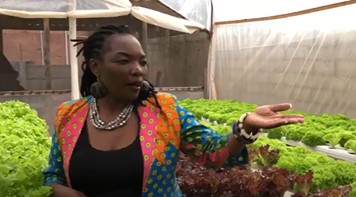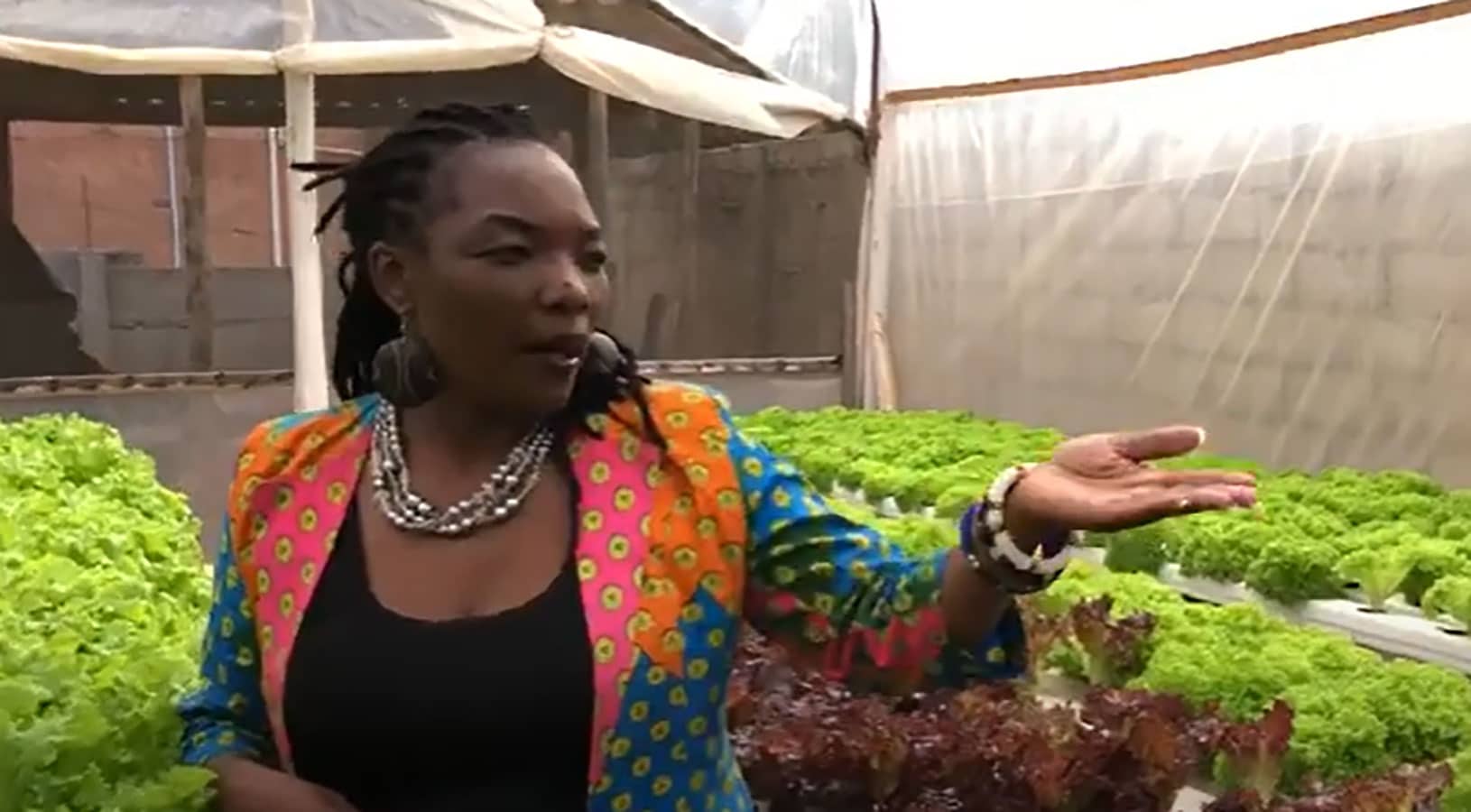Venensia Mukarati calls herself an accountant by profession but a farmer by passion. Raised on a farm herself, Mukarati knows well the challenges that have plagued farming in her native Zimbabwe. Her passion for growing healthy food led her to a creative solution to helping her family overcome both economic troubles and a severe drought. She seemed well on her way to revolutionizing smallholder urban agriculture in Harare until the COVID-19 pandemic struck. But Mukarati seems determined to make a mark on food security in her home city and country, empowering hundreds of women farmers in the process. Her secret? Water.
Hydroponics, to be more precise: the practice of growing plants and food without soil, using only nutrient-rich water. Mukarati shared her story with Grow Further, explaining the path she took from fighting food shortages to helping others build their own mini urban smallholder hydroponics farms.
Born in Bindura and raised on a smallholder farm in the northern region of Mashonaland, Mukarati is no stranger to hardship. She’s survived Zimbabwe\’s political upheavals and hyperinflation, but it was a recent and severe drought that pushed her back to her farming roots. “I grew up in the rural area where farming was a way of living as my parents were peasant farmers,” she explained. “Because I don\’t have much space where I live—in Harare, the capital city of Zimbabwe—
I was looking for something that I can grow and feed my family from a small area.
I came across hydroponics, and I started at my backyard with a 144-plants capacity.”
Turning to water-only farming to cope in a drought? Yes. Mukarati insists there is no contradiction here: she says her small hydroponics uses about 90% less water than if she were farming the usual ways. She listed off other advantages that hydroponics has over conventional farming. For starters, her crops have longer and healthy roots, and by keeping roots intact the crops can be transported and stored for longer as long as they are kept in some water or moisture. She says her crops grow faster as well, making it possible to harvest her hydroponics-grown lettuce in 6 weeks versus 10 weeks for soil-farmed lettuce. Diseases don’t seem to be a major problem, either—a lot of plant diseases are transmitted through soils, and her hydroponics system eliminates this worry by removing soils from the equation entirely.

It’s no panacea, however. Though it may be far less labor-intensive than farming in soil, Mukarati cautioned that hydroponics farming, smallholder or otherwise, still calls for careful attention and care. For instance, hydroponics farming requires constant monitoring of water pH conditions. One must also be constantly mindful of the nutrients added to the water, just as a traditional farmer must monitor soil health and take care in choosing fertilizers. Herein lies a challenge that may require a creative solution—smallholder farmers generally can’t run pH tests on their water. Mukarati says she has her own testing equipment and occasionally takes water samples to get tested professionally, an option available to her given the urban setting she’s farming in. A rural farmer would be out of luck.
Mukarati’s operation is a success. She’s sold grapes, tomatoes, and cucumbers, but that\’s not all. “I am currently growing lettuce, fancy red and green, butter lettuce, basil, parsley, watercress, and will be growing strawberries soon,” she told us. She sold enough produce locally to allow her to hire an assistant, someone to monitor the crops and water conditions while she went to her day job.
Everything was looking great, and then COVID-19 hit. “I do sell to restaurants and farmers market, but with COVID-19 this has really affected my production as the restaurants are closed due to lockdown.”
Mukarati says she had intended to transition to farming full-time, fulfilling a desire to return to her childhood roots. She also planned to use her profits to build more greenhouse space and boost output by 400%. And she wanted to further share the secrets of her success. Before the pandemic, Mukarati trained over 100 Zimbabweans in hydroponics, all women. Finding success herself, Mukarati wants to share her knowledge in the hopes of helping others succeed in Zimbabwe’s small but growing urban agriculture sector. But she says she’s been forced to put all those dreams on hold until the ongoing crisis ends. “Hydroponics is still my part-time hustle,” she says.
Mukarati admits it takes a lot to start a small hydroponics farm: piping and other equipment, simple pumping, and a power source to operate the pumps. Greenhouses are recommended, even small ones, to help control water loss from evaporation. She was able to acquire discarded steel and piping from some local industries to build her first systems. She taught herself the hydroponics techniques, she said, through trial and error. There\’s still room for innovation to help improve the kind of small-scale hydroponics farming she’s pioneered in her city. She sees solar power as a solution for farms in places where power is inaccessible or unreliable. New and better ideas for water pH testing and control might make a difference as well. Perhaps someone in the Grow Further community has a few ideas of their own, something that can help make Venensia Mukarati’s dreams become reality.
— Grow Further
Photo credit: Tinodaishe Violet Mukarati, YouTube.




